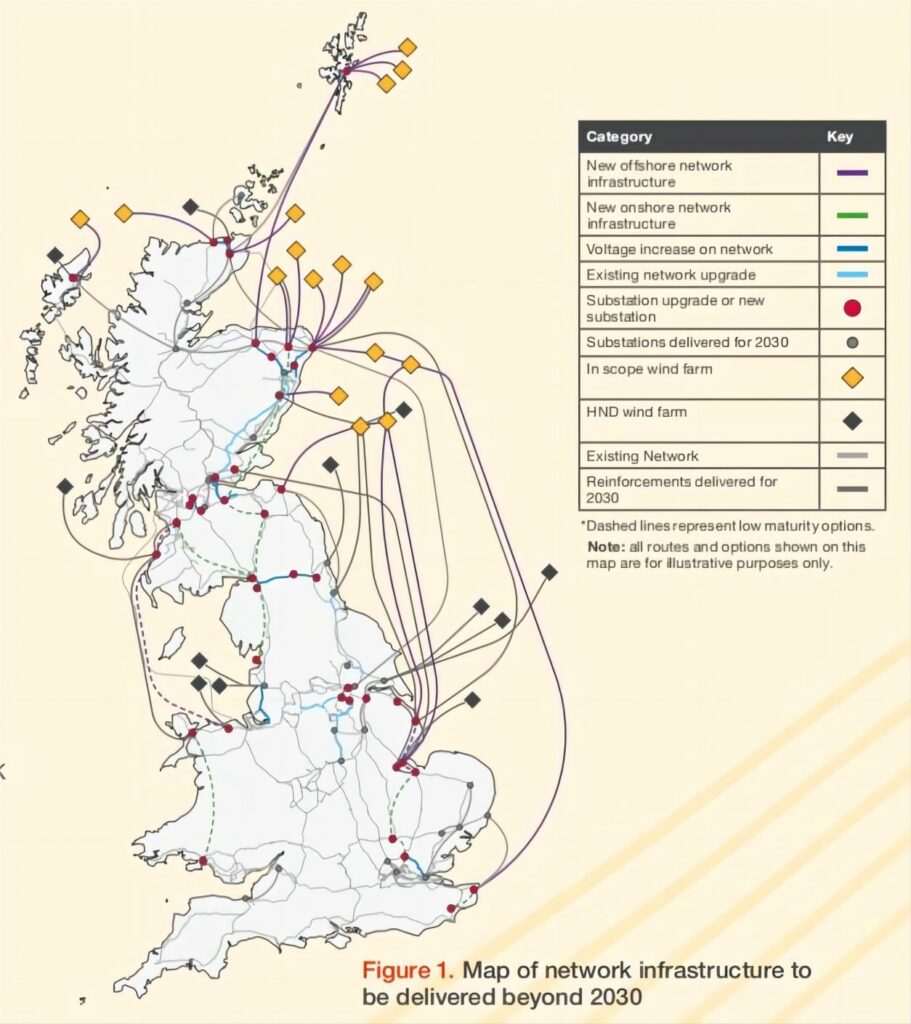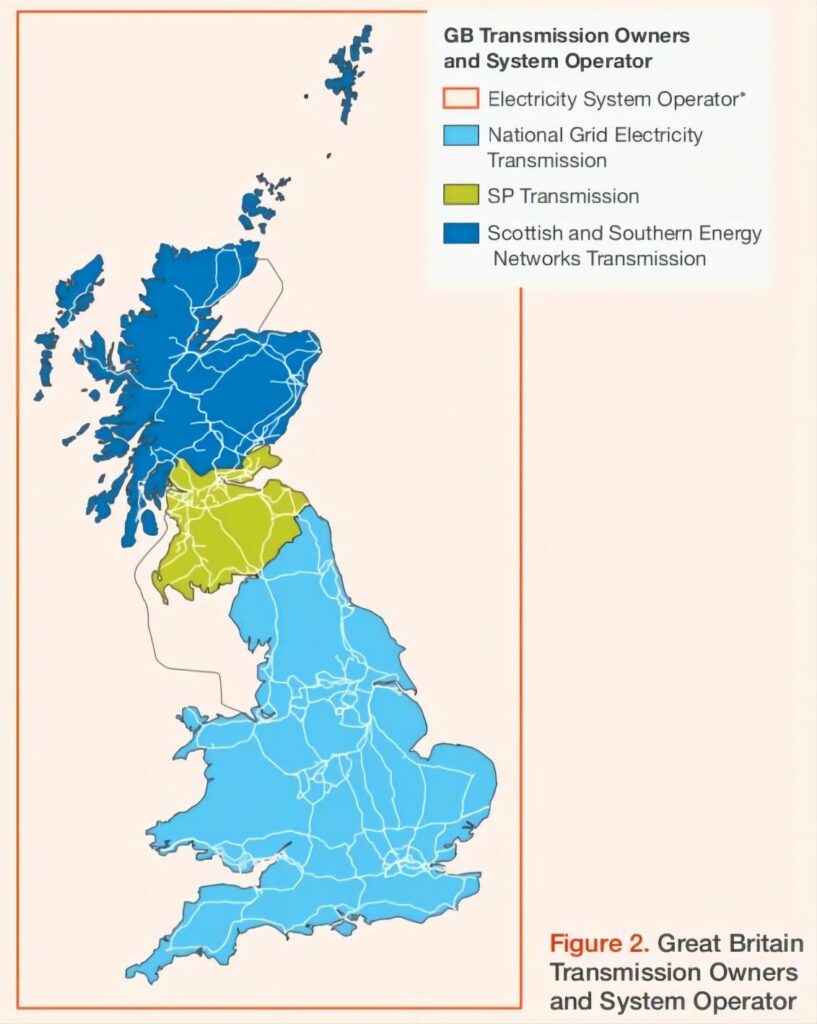The UK is set to dramatically transform its electricity network by 2035, aimed at accommodating a future predominantly powered by renewable sources. Central to the UK Electricity Network 2035 vision is the integration of substantial offshore wind capacities and crucial upgrades to both onshore and offshore infrastructures, ensuring reliability and sustainability in the energy sector.
Expanding Offshore Wind Capacity
By 2035, the UK aims to significantly increase its offshore wind capacity. This expansion is critical as the country moves towards decarbonising its electricity system. The integration of 23 GW of new offshore wind power through the Pathway to 2030 Holistic Network Design (HND) is a cornerstone of this strategy. This design facilitates the UK’s ambitious goal of harnessing 50 GW of offshore wind by 2030, setting the stage for future expansions.

(Source: National Grid ESO)
Upgrading the Supergrid
The concept of the ‘supergrid’ dates back to the 1950s, but the current demands necessitate a once-in-a-generation expansion. This includes laying more than three times the amount of undersea cabling compared to new onshore routes by 2035, drastically enhancing the grid’s capacity and resilience. This undersea cabling not only supports the increased offshore wind capacity but also reduces environmental and visual impacts onshore.

(Source: National Grid ESO)
Innovative Network Solutions
Addressing the current limitations of the electricity grid, the UK plans to introduce innovative network solutions. These include advanced undersea cabling techniques and smarter grid management technologies that optimize the flow and distribution of electricity. The transition to a smarter grid involves utilizing digital technologies to enhance efficiency and manage the grid dynamically based on real-time data.
Environmental and Community Impact
The redesign of the UK’s electricity infrastructure considers its impact on both the environment and local communities. The development of undersea routes, for example, minimizes land use and visual disturbance, while the strategic placement of new infrastructure aims to reduce ecological disruption.
Economic Implications and Job Creation
This extensive overhaul of the electricity grid is not just a technical upgrade but a significant economic booster. Projected to create thousands of jobs across the UK, especially in regions outside of London and the South East, the initiative aims to distribute economic benefits more evenly. The focus on renewable energy also positions the UK as a leader in green technology, fostering innovation and investment.
Conclusion
The UK’s strategic enhancements to its electricity network by 2035 are setting a blueprint for a sustainable energy future. These technical advancements are designed to ensure that the grid is capable, resilient, and ready to meet the demands of a decarbonized future.
This article is based on public information and does not represent any opinion. If you find any misinformation or infringement, please contact us.




